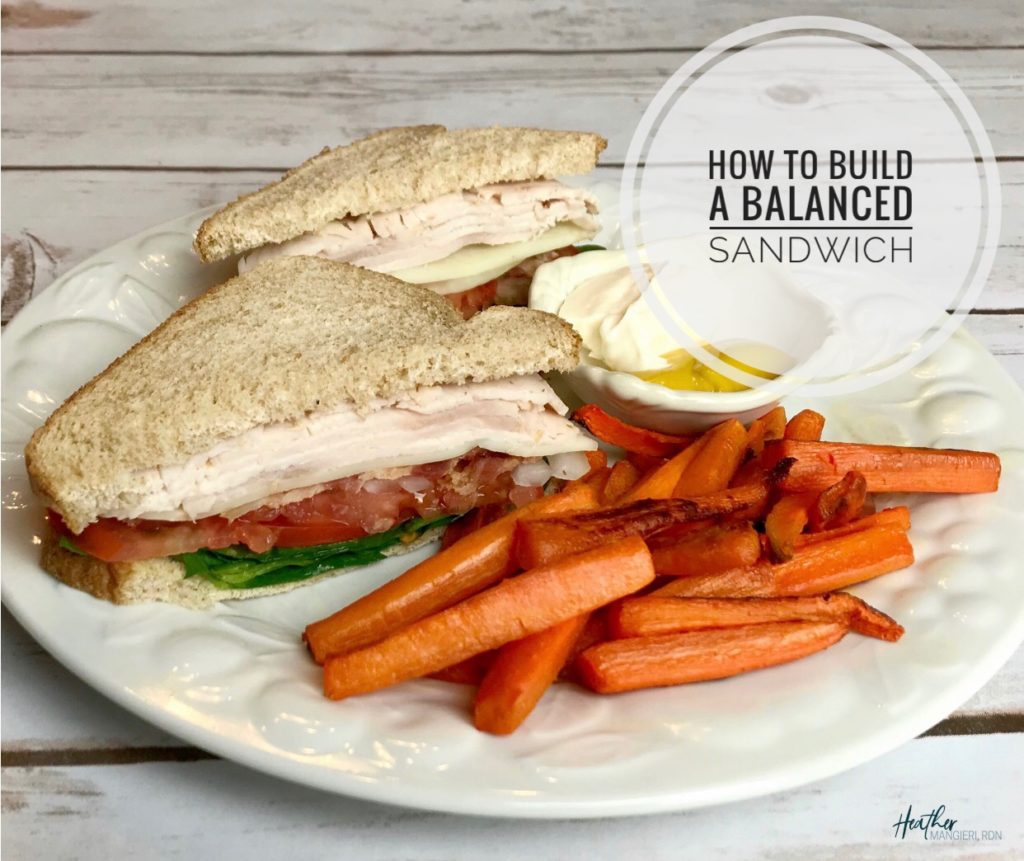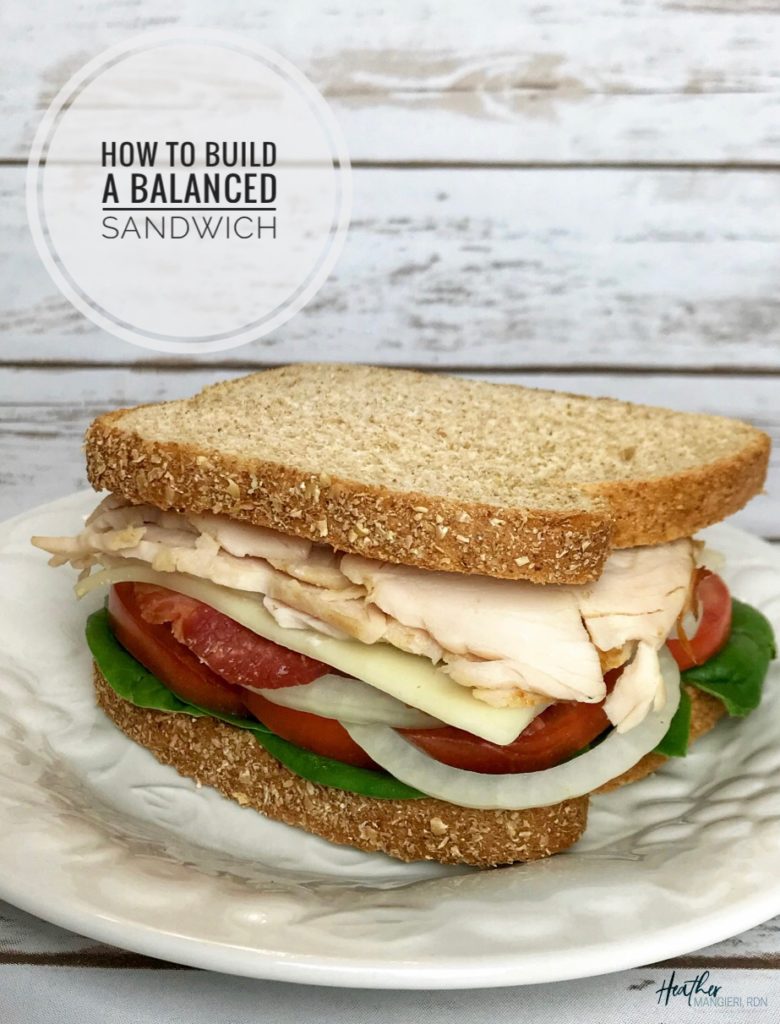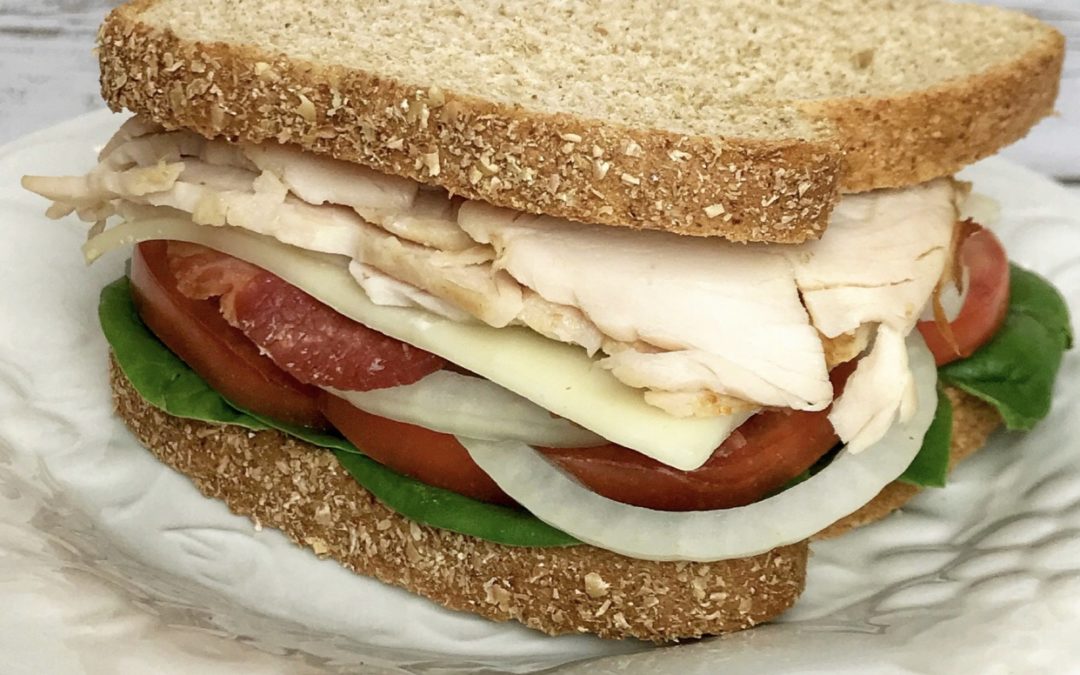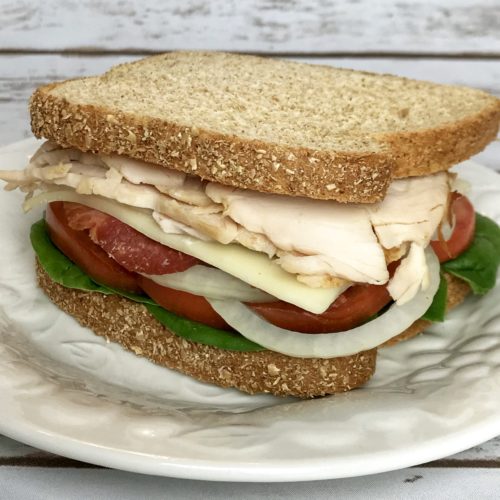Sandwiches make eating on the go easy, and, when made right, they supply a significant amount of nutrients to an eating plan!

Ok friends, seriously! What’s up with the negative talk about sandwiches? Sandwiches are the solution to a busy mom’s meal planning! A busy family, too. They make eating on the go a breeze, and, when made right, they supply a significant amount of nutrients to an eating plan.
The History of the Sandwich
Sandwiches have been around for many years. They first appeared in American cookbooks in 1916; a lot has changed since then. Food wasn’t as abundant then as it is today; bread was most likely baked in your kitchen not bought at a store, and portion sizes were smaller.
The size of a typical hamburger bun back is what we now refer to as a slider. They still sell the smaller size, you just have to look for it.
My point? Before you blame the grain, take a look at your portion size. It might be the size of your bun that’s to blame, or the ingredients that fall between the bread.
A recent study published in the journal, Nutrients, supports that. It showed that grain foods deliver greater than 20 percent of three shortfall nutrients – dietary fiber, folate, and iron – and greater than 10 percent of calcium, magnesium, and vitamin A. It also defends that it’s what inside your sandwich that drive the calorie, fat and sodium content up, not the grain itself.
Rather than disregard sandwiches all together, focus on fixing one worthy of eating.

How To Build A Balanced Sandwich
Similar to my post on Building a Balanced Smoothie, I sharing a few tips on how to build a better sandwich.
Choose your Grain
A whole grain version is the most nutrient-rich, but if you don’t care for that taste, I recommend choosing an enriched-grain variety. If you’ve been down the bread aisle lately, it can be overwhelming. Don’t get confused by the abundance of varieties; choose what you like. The amount that you eat will depend on your calorie needs. If you want a lower-calorie options, you’re in luck. Food companies have responded to consumer request for lower calorie/carbohydrate options, so you have lots to choose from. Look for light whole-wheat bread (35 calories a slice), small flour tortillas, mini bagels, English muffins, sandwich tops, etc. Or, if you prefer the heartier, higher calorie breads, just use 1 slice for your sandwich.
If you have higher calorie needs, look for heartier breads or varieties with seeds, whole-wheat buns, full-sized bagels, wraps or make a triple-decker.
Grain-Free Options
Avoid grains? First, make sure you are avoiding them for the right reasons. This post isn’t meant to get into the big gluten or grain debate; if you avoid gluten because of your personal preference or health issues, I’m not here to talk you out of it. In fact, if you have Celiac Disease or a gluten sensitivity, gluten-free is necessary and best. I’m speaking to those of you that avoid bread because you heard or think it’s something you shouldn’t eat or don’t know how to fit it into your meal in a meaningful way. I see way too many people eliminating foods because of something they heard, not something they experienced. Some foods can make you feel bad because you ate too much, not because you’re allergic or insensitive to the ingredients- there’s a difference. If you require or choose a gluten-free diet, you can still enjoy a sandwich. There are lots of gluten free options available. From my experience, most gluten-free breads taste better toasted.
Choose a Protein
Use 3-4 ounces of a lean protein such as turkey breast, roast beef, ham, tuna or 1-2 ounces of cheese. A few of my other favorite options are tuna salad, chicken salad and egg salad.
Load up the Vegetables
Tthere’s no limit here. Pile on the peppers, onions, lettuce, tomato, spinach, cucumber, eggplant or any other vegetable you can fit between your bread or roll-up in your wrap.
Add Flavor with Condiments or Spreads
Condiments add flavor, but they’re also a leading contributor of calories, fat and sodium. That doesn’t mean you give them up; be mindful of the amount you use. I generally suggest 1-2 tsp if choosing full-fat varieties and slightly more if using a reduced-fat option. My favorite suggestions are: avocado, hummus, mayo/light mayonnaise, ranch or reduced-fat ranch dressing, mustard, or a drizzle of teriyaki or BBQ sauce.

Don’t believe me that a sandwich makes a nourishing meal? I’m sharing the ingredients and nutrition facts for one of my favorite sandwiches. This turkey and cheese on light wheat is one of my go-to meals for when I need a balanced meal in minutes
How To Build A Balanced Turkey, Bacon & Cheese on Lite Wheat Sandwich
Ingredients
- 2 Slices of Whole Wheat Bread
- 3 1/2 ounces Turkey Breast
- .75 ounces Swiss (one deli slice)
- 1 Slice of Bacon (cooked in microwave)
- 3-4 Slices of Tomato
- 3-4 Slice of Onion
- 6 Spinach Leaves
Instructions
- Layer all ingredients between two slices of light wheat bread. Cut down the center. Eat immediately or place in a plastic sandwich bag to take with you.*Optional: add 1-2 tsp light mayo or mustard as a condiment. *not included in nutrition facts below. *will increase sodium content of meal.
Notes
- Nutrition Facts: 301 Calories, 24 g carbohydrates, 1 g fiber, 24 g protein, 12 g fat, 6 g saturated fat, 1,240 mg sodium, 20% daily calcium, 10% daily potassium, 10% daily iron.
- Meal Planning Servings; 1.5 CHO; 4 PRO; 2.5 FAT
- Pairing Suggestions: Serve with a carbohydrate side such as roasted carrots or 1 ounce of baked tortilla chips and salsa to make a balanced meal.
DID YOU MAKE THIS RECIPE? Tag @heathermangieri on Instagram and hashtag it #HeatherMangieriNutrition



 Hi, I’m Heather – a registered dietitian, busy mom, consultant, adventure junkie and travel addict who has mastered living healthy on the go. My blog is where I share simple recipes and healthy living tips to help and inspire others to live their best life.
Hi, I’m Heather – a registered dietitian, busy mom, consultant, adventure junkie and travel addict who has mastered living healthy on the go. My blog is where I share simple recipes and healthy living tips to help and inspire others to live their best life.